Go-to-market strategy: what is it? Why is it so important to launch a new brand?

Does Your Vision Need a Launchpad? Here's Your Blueprint for Propelling Your New Ideas or Products into the Business Sky.
Whether it's a groundbreaking idea, an innovative product, a newly birthed service, or a freshly renamed brand, launching it into the market requires a well-thought-out strategy. You need to scrutinize your target audience, identify unique business aspects, and conceive a master plan for marketing and distribution. Enter the over-the-top strategies—the go-to-market (GTM) strategies!
When you're introducing your latest creation to the market, a well-crafted strategy is non-negotiable. Whether it's an unprecedented product or a rebranding endeavor, having a go-to-market strategy up your sleeve is the wildcard you need for triumph.
A go-to-market strategy is the key to your business success when stepping into uncharted territory. It arms your team with valuable insights to boldly navigate the turbulent initial days of a product launch.
In this guide, we'll explain why you need a go-to-market strategy, what it really entails, and how to create yours, step by step. Ultimately, you'll emerge victorious, well-equipped for the launch of your next brilliant idea or service. Courage, full steam ahead!
What Is a Go-to-Market Strategy?
Imagine that your business needs a long-term marketing plan to thrive. However, a go-to-market (GTM) tactic is slightly different—it's time-bound and tied to a specific release. Think of it as an instruction manual for introducing your new business model, product, service, or brand to your preferred audience.
A well-defined go-to-market plan includes researching your potential audience, listing market differentiators, and offering concrete ideas for marketing and distribution.
Throughout this guide, we'll refer to the release as a "product release." This term can be interchangeable with a product, service, or brand. Regardless of the specifics, the procedure will remain the same.
Types of Go-to-Market Strategies
There are two fundamental approaches to launching a product: focusing on the product itself or the sales strategy. When focusing on the product, you rely on its intrinsic appeal—features or upgrades that entice customers to make a purchase. Many companies present a basic option, accompanied by a range of exclusive enhancements that make the product irresistible.
On the flip side, leveraging the sales strategy relies on your salesmanship. This involves creating effective presentations or compelling marketing campaigns to showcase the benefits of your product. It's the kind of strategy that makes customers say, "This is exactly what I need!"
Difference Between a Go-to-Market Strategy and a Marketing Plan
When we talk about GTM plans, it's crucial to understand how they differ from marketing strategies. A go-to-market plan is essentially a roadmap your organization will follow to introduce a new product or expand product offerings in a new market. By following the guidelines provided in this GTM manual, you'll be able to craft a plan tailored to a specific product.
Conversely, a marketing strategy is a more comprehensive outline of how you'll raise awareness about existing products or engage customers with your brand. Marketing can be a component of the go-to-market plan for a specific product, but a broader marketing plan typically encompasses everything your organization offers.
Who Needs a Go-to-Market Strategy?
Virtually every business aims to excel in its industry, making a go-to-market strategy essential. This comprehensive approach allows you to understand your ideal customers while creating an atmosphere of excitement that sets you apart and drives sales. Neglecting a well-designed go-to-market strategy risks disappointing performance, loss of market share, and missed opportunities. Crucial scenarios demanding a solid go-to-market strategy include:
- Launching a new product
- Entering a new market
- Repositioning or rebranding
- Implementing a scalable business model
- Modifying a business model
In any context, a robust go-to-market strategy is not a luxury—it's a fundamental key to your success. Forget it, and you risk lagging behind as the rest of the market advances. It's not a luxury; it's the key to leadership.
Why Is a Go-to-Market Strategy Necessary?
You may already have a marketing strategy, but why bother with a go-to-market strategy? What's the trick?
According to CB Insights, 35% of startups fail because nobody felt the need for their product or service. Another 19% fail due to a flawed business model, while 15% grapple with pricing issues.
A go-to-market strategy acts as a spotlight, illuminating potential pitfalls before the grand debut. If you realize your target market is already saturated, you can avoid wasting money on a destined-to-fail product. You'll also have time to reassess the product itself, the market you're entering, or your overall approach.
Product launches are a team effort. A go-to-market plan ensures everyone is on the same page, with clear responsibilities and timelines.
Remember, even with detailed planning, your strategy must be flexible. As you enter the market, you'll be like a dancer adapting to new steps as you gather fresh data.
How to Create an Effective Go-to-Market Strategy
A well-planned go-to-market (GTM) strategy can significantly contribute to the success of your next product launch. The following steps will guide you through the planning process.
1. Identify the Target Customer
The first fundamental step in creating a go-to-market strategy is identifying your ideal customer. Who will be the delighted buyer of your product, and what sparks their interest?
To paint a detailed picture of your target customer, delve into creating buyer personas—fictional representations of the people you're targeting with your marketing. To better understand your audience, ask questions such as:
- What needs am I fulfilling for this person?
- What are the demographic details of this customer: age, gender, average income, family structure? Remember that different buyer personas may have different demographic data.
- What are the values and interests of my customer?
- Where is my customer most likely to seek my product? Will they use a mobile device, a desktop, social media, or a search engine?
For example, if you're launching a new organic dog food product, one of your buyer personas could be:
Millennial Madison: A woman between 25 and 40 years old, with an annual income ranging from £40,000 to £80,000. Without children, she considers her dog an integral part of the family. Her primary concerns revolve around the quality of food for her furry friend and eco-friendly choices. Madison frequently searches for new dog treats online using her mobile phone, prioritizing convenience, shipping speed, and online reviews.
Additionally, involving an experienced user experience (UX) or marketing team can be helpful to further refine your target audience through tailored research.
You'll discover if there's a ready market for your product or if adjustments are needed, but it's better to know before launching a product destined to flop.
2. Define Your Unique Selling Proposition (USP)
Considering your target audience, you need to find a way to make your product stand out from others. This process is your unique selling proposition, also known as the unique value proposition.
Imagine launching a new skincare product into a saturated market. What will convince your target customer to choose your product over others in the market?
The first step is to immerse yourself deeply in the competitive landscape. Who are the companies offering similar products? Create a detailed list, including every similarity or overlap with your product.
Next, think about what makes your product a superior choice. Put yourself in the shoes of your target customer. What could your product or brand offer that others don't? For example, if you're selling an organic dog snack targeting Millennial Madison, your differentiation might be in sustainable ingredients, aligning with her values.
This is a crucial step to identify any critical issues before the launch. You might discover that your value proposition is weak, or worse, non-existent. In that case, you'll need to revisit your product, looking for new perspectives to make it unique in a crowded market. Otherwise, you may already pinpoint what sets your product apart, and the goal is to clearly outline these differentiation factors.
3. Refine Your Pricing Strategy
When it comes to setting the price of your product, you need to consider various factors, including production costs and customers' willingness to pay.
Start by examining the competition to understand what prices customers are willing to pay for similar products. Next, carefully calculate all costs associated with producing your product, covering everything from product ideation to material and labor costs.
Set a price that is sustainable for you and the market can bear. It might also happen that your target market is willing to pay more than initially calculated.
Remember that the launch price may not be the final one. Maintain flexibility in your pricing strategy; it could prove valuable once you're in the market.
4. Consider Sales and Marketing Channels for Distribution
A crucial phase in introducing a product to the market is figuring out how to distribute it. It all comes down to a fundamental question: how can you best reach your target customers?
For some companies, direct-to-consumer (D2C) sales prove to be the most effective choice. Customers can buy directly from your brand through your online store. Examples of successful D2C brands are Dollar Shave Club and Warby Parker.
If you decide to go the D2C route, ensure that your plan includes building a robust online storefront and a supply chain management system. Ask yourself:
- How will customers find our brand?
- How will customers place orders?
- How will we manage order logistics?
However, it might be that your product is better suited for other businesses than individual consumers. For example, if you have an SEO-specialized agency, your target might consist of other businesses. For business-to-business (B2B) sales and marketing, you'll need to have both an online presence and a sales team that directly targets businesses.
Considering various selling methods provides more opportunities for success. If you don't know where to start, some common sales channels include:
- Online store
- Physical retail locations
- Social media platforms
- Third-party sites, like Amazon or Etsy
The key is to tailor your distribution strategy to the unique characteristics of your product and your customers' preferences.
5. Build a Promotional Strategy
The last crucial step in creating a go-to-market strategy is formulating a detailed marketing plan. This plan should outline how you will present your product, the selected marketing channels for its promotion, advertising strategies, and more. Let's break it down into key points.
1. Choosing Marketing Channels
Which channels will we use to promote our product? From the power of social media to traditional direct mail advertising, such as postcards. The essential thing is to select channels that best meet the needs of your target audience.
2. Defining the Key Message
What is the central message we want to convey? Reconnect with your unique selling proposition and synthesize it into a few key points. These will be the foundations of all your future marketing messages.
3. Measuring Success
How will we measure our marketing success? Data derived from analytics is crucial to continuously optimize the plan and, even more, to improve the product itself. Establishing benchmarks allows us to assess progress and understand when it's time to change course.
4. Assigning Responsibilities
Who will be the primary person or team responsible for the marketing strategy? It could be your internal marketing team, an external agency, or the sales department. In some cases, a combination of all these resources. Specifying who will have these responsibilities in the go-to-market strategy is essential to ensure that the right people are involved in marketing outcomes.
A well-structured marketing plan is the key to making your product shine in the market. Get ready to do it with style and determination!
6. Monitor Performance
Congratulations on creating and launching your go-to-market (GTM) strategy! While you've overcome the most challenging phase, now is not the time to relax. In fact, the crucial part begins now: continuous monitoring of your strategy's performance.
Effective monitoring is the key to unlocking business and marketing objectives. It is crucial because it allows a deeper understanding of weaknesses, identifies the most effective segment of the buyer's journey, and enables data-driven decision-making to optimize the campaign. Here are some safeguards to use for monitoring your go-to-market strategy:
1. Establish Goals and Define KPIs
Set clear goals aligned with business objectives, measurable through Key Performance Indicators (KPIs). Among various KPIs, track customer acquisition cost, revenue growth, conversion rates, sales cycle duration, and customer loyalty.
2. Measure Performance
Regularly evaluate performance against established goals and KPIs. Identify successes and pinpoint areas where improvement is possible.
3. Act on Data
Using performance data, make targeted changes and refine your strategy with surgical precision.
Your commitment to continuous monitoring ensures that your strategy remains agile and adaptable, allowing you to achieve and surpass marketing and business goals. Stay vigilant!
Go-to-Market Strategy
Until now, we've explored the GTM strategy in theory. Now, let's immerse ourselves in a hypothetical example of how this strategy could come to life with a new mobile app called Daily Hydration. This innovative app keeps track of individuals' water intake throughout the day.
Target Audience
The target audience for the Daily Hydration app will embrace those who can benefit the most from the solution, as outlined below:
- Health-conscious individuals: Those who already track their water intake but can benefit from the Daily Hydration app to simplify the process and address one of its pain points.
- People with specific medical conditions: Individuals with kidney diseases, hypertension, or diabetes, who need to monitor their fluid intake carefully. The Daily Hydration app makes this process simpler and allows for easy data sharing with healthcare professionals.
- Athletes and fitness enthusiasts: Individuals who are physically active and require adequate hydration for optimal results.
- Busy professionals: Individuals who might forget to drink enough water during the day. The Daily Hydration app provides timely reminders to help maintain hydration.
- Individuals with weight loss goals: People who understand the importance of staying hydrated for healthy weight loss.
- Parents and caregivers: Individuals who need to ensure they and those they care for drink enough water.
- Environmentalists: People interested in monitoring their water consumption and reducing their overall water footprint.
Selling Proposition
In addition to contributing to the improvement of users' health and well-being, the Daily Hydration app offers personalized suggestions based on user biometrics, goals, and weaknesses, including weight, body type, age, activity level, and more.
With an intuitive interface, Daily Hydration simplifies performance monitoring and sharing with healthcare professionals, friends, and support groups. In particular, the app makes water intake fun, rewarding, and engaging through gamification, allowing users to compete for honor badges with friends, other users, or the broader community.
Daily Hydration also provides personalized informative content to help users understand the importance of adequate hydration for health and the environment. It encourages the use of tap water rather than bottled water, promoting a more sustainable lifestyle and reducing plastic waste.
Distribution Channels
I canali di distribuzione ottimali per l'app Idratazione Quotidiana dipenderanno dal pubblico e dalla fase del percorso d'acquisto in cui si trova. Ecco alcuni tra i più efficaci:
- App Store: Assicurati che l'app sia disponibile su app store popolari come Apple App Store, Google Play Store e Amazon Appstore.
- Accesso diretto: Oltre agli app store, offri la possibilità di scaricare l'app direttamente dal sito web, con collegamenti ai vari app store.
- Notifiche Push: Utilizza notifiche push mobili per attirare l'attenzione degli utenti, fornire suggerimenti personalizzati, aggiornare la classifica e altro ancora.
- Marketing sui Social Media: Sfrutta piattaforme come Facebook, Instagram e Twitter per generare entusiasmo, promuovere l'app, condividere recensioni degli utenti e aumentare i download.
- Marketing degli Influencer: Collabora con influencer nei settori del fitness, ambiente e benessere per aumentare la consapevolezza e la portata dell'app.
- Email Marketing: Utilizza l'email marketing per istruire e coinvolgere gli utenti che si iscrivono all'app Idratazione Quotidiana.
- Copertura Media: Sfrutta comunicati stampa, notizie locali e blog online per generare consapevolezza e promuovere i download.
- Partenariati: Esplora collaborazioni con datori di lavoro per creare competizioni che spingano i partecipanti verso uno stile di vita più sano.
Questo mix di canali di distribuzione e strategie di marketing contribuirà a costruire e consolidare una solida base di utenti.
Promotional Strategy
Our promotional strategy focuses on actions and offers targeted to influence our KPIs. Here are some of the promotional strategies we will adopt:
- Download Incentives: Offer limited-time discounts, in-app currency for free, and promotional codes to stimulate downloads.
- Event Sponsorships: Sponsor relevant health and wellness events, highlighting how our product can alleviate the audience's pain points.
- Social Media Campaign: Use paid advertisements to address customer needs, move the target along the buying journey, and engage potential users. Manage contests, collaborate with influencers, and encourage social engagement along with app downloads.
- Content Marketing: Create blogs, infographics, and other informative materials. While they will include app information, the focus will be on education, such as the benefits of hydration and the importance of monitoring water intake, encouraging users to download the app.
- App Store Optimization: Optimize our App Store listing with relevant keywords, persuasive descriptions, and high-quality screenshots to improve visibility and attract more downloads.
- Word of Mouth: Implement an affiliate program where existing users can invite friends and family to download the app, receiving special incentives such as in-app currency and bonus points for referrals.
This combination of strategies aims to maximize visibility and actively engage users in the buying journey.
Monitor Performance
To assess effectiveness and identify improvement opportunities, we will follow several KPIs and metrics, including:
- Downloads: This primary success metric will be monitored over time, analyzing trends to understand how to promote success through strategic downloads.
- User Engagement: Once users have downloaded the app, we will monitor their daily activity, retention rate, and time spent on the app to evaluate how active and engaged they are.
- Revenue: We will examine the performance of the monetization strategy, including in-app purchases, subscriptions, and affiliate links, to understand what works well and where improvements can be made.
- Customer Acquisition Cost (CAC): We will measure CAC on the first day to establish benchmarks across various sales and distribution channels. We will seek to reduce acquisition costs and identify the most effective channels to optimize investments.
- Conversion Rates: We will define three key conversion rates:
- CR1: Number of impressions compared to downloads.
- CR2: Number of people who download the app and become active users.
- CR3: Number of people who download the app and make purchases. - Customer Feedback: Actively collect feedback through various channels, using anecdotal and empirical data to drive continuous improvements.
- Competitor Monitoring: To stay ahead of the competition, we will keep an eye on their activities and adopt preventive strategies when necessary.
This comprehensive approach will allow us to gain a clear view of the app's performance and identify areas of opportunity for its continuous development.
Benefits of an Effective Go-to-Market Strategy
As you can imagine, there are numerous advantages to having a solid and well-planned go-to-market strategy. Some of the key benefits are outlined below.
Crystal Clear Understanding
A robust Go-to-Market (GTM) strategy provides a clear view of the target audience, their needs, and how your product or service will meet them. This clarity is reflected throughout the organization, including the sales team.
Perfect Alignment
Increased clarity leads to optimal alignment. The GTM strategy synchronizes the entire organization on value proposition and positioning, creating a shared vision.
Enhanced Customer Experience
Thoroughly understanding customer preferences and needs significantly improves the ability to establish lasting relationships. Your GTM strategy sets you on the right path to deliver a truly engaging customer experience.
Increased Sales
A well-structured GTM strategy translates into increased sales, providing your sales team with clear guidance on how to effectively engage the target market.
Distinctive Competitive Advantage
Your GTM strategy distinguishes your company and product from the competition, identifying a unique niche in the market. Armed with your value proposition, the sales team can make your product stand out memorably.
Simplified Product Launch
In essence, a well-defined GTM strategy aligns everyone on the same page, simplifying the product launch process and reducing operational obstacles.
Achieve Success with an Effective Go-to-Market Strategy
A "go-to-market" strategy is the beating heart of a successful product launch. Creating one provides you with the opportunity to define your audience, refine your unique proposition, establish a pricing strategy, select effective distribution channels, and measure success. By following these steps, you can shape a strategy capable of propelling your business forward. Be ready to take flight!
By accepting you will be accessing a service provided by a third-party external to https://insightadv.uk/

 IT
IT  EN
EN 

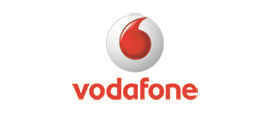
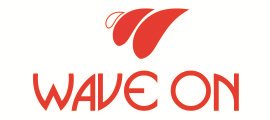


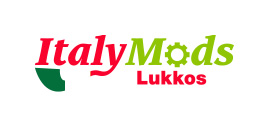




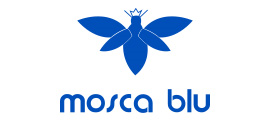




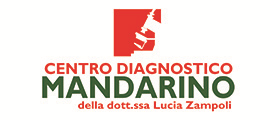







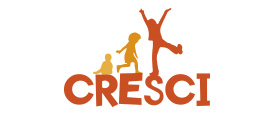



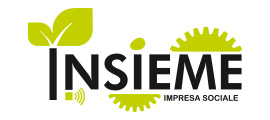








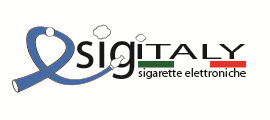
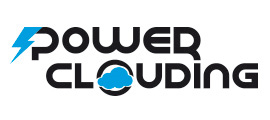


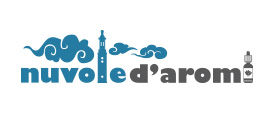

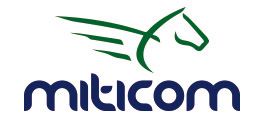

















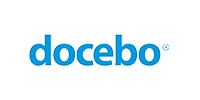



Comments